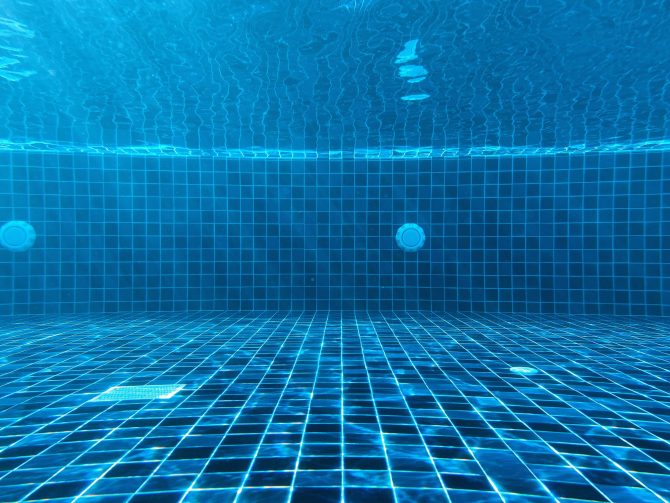Some Fresh Alternatives to Chlorine for Your Pool

I expect everyone will have experienced the strong smell, dry skin, red and stinging eyes you get after visiting public baths, so it’s no surprise that many people who own or are considering a swimming pool for the first time will look for an alternative sanitiser to chlorine. It’s the most widely used sanitiser in pools all over the world, mainly because it’s the cheapest and easiest to use. Chlorine Kills bacteria and eliminates algae growth, just two of the things needed to keep a swimming pool or spa clean and healthy to use.
Public baths usually have far too much chlorine in them in the first place, to effectively disinfect the warm yellow patches of water left behind by less considerate bathers! Stinging eyes is normally an indication of too much chloramine in the water, a byproduct of the reaction between chlorine and organic material (oils, lotions, skin etc) so a healthy, well balanced chlorine pool shouldn’t make your eyes sting at all.
The most common alternative I’m asked for is salt, but salt pools are fitted with a chlorination device which produces chlorine from the salt, so although there may be a difference in the composition of salt pools, there can be just as much chlorine present, if not more.
So what alternatives are there?
1. Bromine (0% Chlorine)
2. Persulphates (Active Oxygen) (Potassium Monopersulphates) (0% Chlorine)
3. Copper and Silver (Low Chlorine)
4. Ozone (Low Chlorine)
5. Polymeric Biguanides (Revacil and Baquacil) (0% Chlorine)
6. PristineBlue (0% Chlorine)
Bromine, is very similar to chlorine, it’s used in much the same way. It has it’s own version of chloramines – Bromamines ! These don’t smell as bad as strong chlorine and actually have disinfecting properties which kill bacteria so are better to have than chloramines. Bromine is also more tolerant of high pH and works better than chlorine in higher temperatures, that’s why bromine is often a preferred treatment in spa’s.
Persulphates, work in a similar way to chlorine, breaking down fat or oils and killing bacteria, but it doesn’t work very well against our old enemy algae, so an additional algae treatment will also be necessary. It’s not cheap, about 40% more expensive than chlorine, it’s generally another preferred treatment for spas. The main benefit of using persulphates is that they break down and remove particles to the size of an atom so it’s sort of like a chemical filter, you can swim in the water after only 1 hour of using it.
Copper and Silver, has been used for centuries as an effective water sanitiser although it works much slower than chlorine, normally copper and silver is produced by a device called an ionizer, it works in a similar way to a salt chlorinator with electrodes which wear away (and are expensive) after a while but deposit the elements into the water to kill bacteria. You still need to have some trace levels of chlorine 0.5 – 1ppm (Parts Per Million) for the system to be completely effective.
Ozone (O3), usually fitted as a standard option on some spa’s, the equipment uses a toxic and quite unstable form of oxygen to kill bacteria but only treats the water as it goes through it. A separate algaecide will need to be used and a trace element of chlorine (0.5 – 1ppm) to make sure nothing enters the water.
Polymeric Biguanides (PHMB polyhexamethylene biguanide), I think the name will make you understand why we will just refer to this system as Baquacil. It’s a three part treatment, Baquacil kills the bacteria, Baquacheck is an algaecide and Baquashock is basically a solution of hydrogen peroxide which breaks down the fats and oil etc. PHMB is totally incompatible with chlorine so all traces must be removed when changing a pool over to this system.
PristineBlue, more recently there has been a breakthrough in chlorine free water treatment for swimming pools and spas. This system uses copper as a sanitiser, against both bacteria and algae, a chlorine or salt pool can be changed over to PristineBlue or changed back to chlorine within 24 hrs.
Although copper has been used extensively for algae control for centuries it’s been difficult to effectively treat bacteria without leaving an undesirable level of copper in the water. Not any more, the PristineBlue molecule, a secret ingredient which combines with copper salts to become biologically active ensures that once algae and bacteria absorb the copper ions on contact, they are killed and copper levels are no longer measurable and inactive.
Copper Sulphate has just been approved in Europe as a recognized disinfectant under the biocide directive, technically there are no harmful chemicals in the product what so ever making it the closest thing to a fresh water pool as possible.
Some products may not be as cheap or as straight forward to use as chlorine in a pool but alternatives are available. Your pool, your choice.
See also:
Share to: Facebook Twitter LinkedIn Email
More in people, swimming pools, work
Leave a reply
Your email address will not be published. Required fields are marked *



